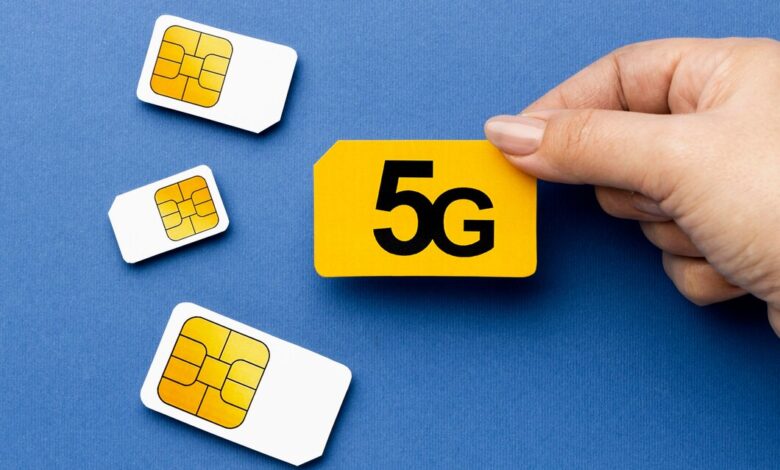Learn More About eSIM: The Future of Mobile Connectivity

If you’re wondering what eSIM is, how it works, and why it’s considered the future of mobile connectivity, this guide covers everything you need to know.
What is eSIM?
eSIM, short for Embedded SIM, is a digital SIM card that is embedded directly into a device’s hardware. Unlike physical SIM cards that require manual insertion and swapping, eSIMs are remotely programmable and can store multiple network profiles.
With eSIM, users can switch mobile carriers without needing a new SIM card. This feature is particularly useful for frequent travelers, businesses, and anyone who wants a hassle-free mobile experience.
To learn more about eSIM, check out how it works and how to get started.
How Does eSIM Work?
Using an eSIM is simple and more convenient than traditional SIM cards. Here’s how it works:
- Device Compatibility Check – First, ensure that your smartphone, tablet, or smartwatch supports eSIM technology. Most modern Apple, Samsung, and Google devices come with eSIM functionality.
- Choose an eSIM Plan – Purchase an eSIM plan from a supported network provider or a third-party travel eSIM provider.
- Scan and Activate – Instead of inserting a physical SIM, users scan a QR code or enter an activation code to install the eSIM profile on their device.
- Start Using Mobile Services – Once activated, the eSIM connects to the chosen carrier’s network, enabling mobile data, calls, and texts.
Unlike traditional SIM cards, eSIM allows multiple profiles to be stored on one device, making it easy to switch between different carriers.
Key Benefits of eSIM
The transition from physical SIM cards to eSIM technology offers numerous advantages for users and businesses. Here’s why eSIM is a game-changer:
- No Physical SIM Required – No need to insert, remove, or swap SIM cards manually.
- Seamless Carrier Switching – Switch between carriers without visiting a store or ordering a new SIM.
- Dual SIM Capability – Many eSIM-compatible devices support both eSIM and a physical SIM, allowing for dual SIM functionality.
- More Secure – eSIMs are embedded within the device, reducing the risk of loss, theft, or damage.
- Smaller Device Design – Manufacturers can create slimmer, more compact devices by eliminating the need for a SIM card slot.
- Eco-Friendly Technology – Reduces plastic waste and contributes to a more sustainable mobile industry.
For businesses, eSIM technology helps streamline corporate mobile plans, allowing IT managers to remotely provision and manage multiple devices.
eSIM for Travelers: A Global Connectivity Solution
One of the biggest advantages of eSIM is for international travelers. Traditionally, travelers had to purchase local SIM cards or rely on expensive roaming plans. With eSIM, switching to a local network abroad is easier than ever.
Why Travelers Should Consider eSIM:
- Instant Connectivity – No need to search for a local SIM card upon arrival.
- Avoid High Roaming Fees – Choose affordable local or global eSIM plans instead of paying costly roaming charges.
- Multiple Profiles – Store multiple eSIMs from different countries and switch networks as needed.
- Secure and Reliable – Unlike physical SIMs, eSIMs can’t be lost or stolen, ensuring uninterrupted connectivity.
Many travel eSIM providers offer affordable prepaid data plans that work across multiple countries, making them a great choice for frequent flyers and digital nomads. You can learn more about eSIM for travel and global connectivity.
Which Devices Support eSIM?
eSIM adoption is growing rapidly, and most leading smartphone brands have integrated this technology.
Popular eSIM-Compatible Devices:
✔ Apple: iPhone 11 and later, iPad Pro, iPad Air (4th Gen & later)
✔ Samsung: Galaxy S20 and later, Galaxy Z Fold/Flip series, Galaxy Watch 4 & 5
✔ Google: Pixel 4 and later
✔ Huawei: Some newer models like Mate 40 Pro
✔ Laptops & Tablets: Microsoft Surface, Lenovo ThinkPad, and newer iPads
Some devices, such as the iPhone 14 (U.S. model), have completely removed the physical SIM slot, making eSIM the primary mobile connectivity option.
Potential Challenges of eSIM
While eSIM offers a range of benefits, there are still some challenges to consider:
🔹 Limited Carrier Support – Not all mobile network providers support eSIM technology yet.
🔹 Device Compatibility – Some older smartphones and budget models don’t support eSIM.
🔹 Setup Complexity – First-time users may find the activation process slightly different from traditional SIM installation.
🔹 No Physical Backup – Unlike traditional SIM cards, you can’t simply remove an eSIM if the device malfunctions.
Despite these minor challenges, eSIM adoption is increasing worldwide, with more carriers and manufacturers embracing the technology.
The Future of Mobile Connectivity with eSIM
eSIM is reshaping the mobile industry and is expected to become the standard for mobile connectivity in the coming years.
✔ More eSIM-Only Devices: Apple and other manufacturers are leading the shift toward eSIM-only smartphones.
✔ Wider Carrier Adoption: More mobile carriers worldwide are adopting eSIM support.
✔ Integration with IoT & 5G: eSIM is becoming a key technology for smart homes, connected cars, and 5G networks.
✔ Global Roaming Simplified: eSIM technology will eliminate the need for physical SIM swapping while traveling.
As eSIM adoption continues to grow, users will benefit from greater flexibility, enhanced security, and a more streamlined mobile experience.
Read also: Exploring UsefullIdeas.net: A Hub for Practical Tips and Smart Solutions
Final Thoughts
The shift from physical SIM cards to eSIM technology is a major step toward a more flexible and connected world. Whether you’re a frequent traveler, a business professional, or just someone looking for a more convenient mobile experience, eSIM offers undeniable advantages.
If your device supports eSIM, it’s worth exploring the benefits and considering a switch to digital connectivity. With faster carrier switching, lower roaming costs, and improved security, eSIM is truly the future of mobile technology.
Would you make the switch to eSIM today? You can learn more about eSIM and get started with the latest eSIM plans today!




